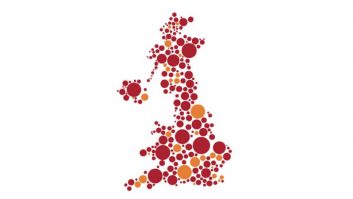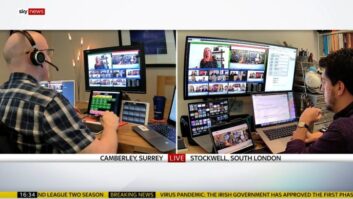Following British prime minister Boris Johnson’s announcement that England will re-enter lockdown for at least four weeks from Thursday, the TV industry faces yet more turmoil.
Commercial broadcasters relying on the Christmas advertising spend to boost their revenues are likely to be particularly affected as non-essential shops will be forced to close.
However, this time commercial broadcasters know what to expect. “Broadcasters have learnt from the first lockdown. They understand consumer and viewer behaviour more clearly,” analyst Alex DeGroote tells TVBEurope.
With many broadcasters recently announcing their Q3 earnings, the TV advertising industry had started to see some signs of recovery, however lockdown 2 will certainly impact ad revenues in the run-up to Christmas. “If lockdown 2 only lasts until 2nd December and works successfully, and a vaccine or Covid drugs become available in the near term, then it may not be that painful,” says DeGroote. “The worry is that the new lockdown lasts in reality until spring next year.”
So, how could the impact of lockdown 2 compare to earlier this year for commercial broadcasters? DeGroote cites ITV as an example: “Total advertising in Q2 (eg spring time) was down 43 per cent and down 21 per cent across the first half of 2020, the most severe decline in the history of ITV. Therefore we can assume that Q4 (Oct-Dec) will be down perhaps 20 per cent YoY, though this will depend on whether lockdown fully extends to Christmas.
“If this Q4 assumption is correct, then ITV’s Full Year 2020 advertising will be down perhaps 30 per cent YoY. This is clearly unprecedented in a bad way. Retail, travel and hospitality are all categories which will be hit very hard. And Christmas is seasonally very important for all media companies.”
On the flip side, lockdown during autumn/winter is likely to lead to more eyes on screen. “The lockdown will increase viewing, without a doubt,” states DeGroote. “For example, ITV viewing in the first half of 2020 benefited from the pandemic and lockdown restrictions in the UK, with people watching more linear television and streaming more content. Total ITV viewing (which combines live viewing of ITV channels, recorded and VoD) was up 4 per cent, with ITV main channel share of commercial impacts (SOCI) up 1 per cent to 26.2 per cent (2019: 25.9%).
“Now people will be at home in the run-up to Christmas, and it gets dark at 4pm, viewing hours will go through the roof. However, the commercial companies are actually losing market share to the streamers. Hence why they are fast-tracking their own SVoD and AVoD plans, and hoping to attract younger audiences.”
The other big difference with lockdown 2 compared to earlier in the year is that both sport and TV production will be allowed to continue. “TV is a huge and complex industry, and a growth driver for the UK Creative Arts sector, creating more than 180,000 jobs, including many freelancers, and contributes more than £12 billion to the economy annually,” says DeGroote.
“In addition, the government-backed Film and TV Production Restart Scheme formally launches following state aid approval. This new government funding is available to all productions made by companies where at least half of the production budget is spent in the UK. Ironically, this comes at a time when most cinemas are now shut, possibly forever. Which reiterates the importance of SVoD channels, as a route to market.”







